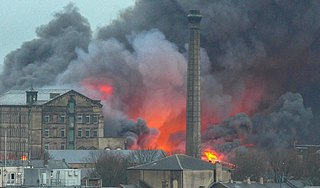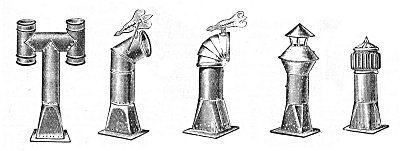Chimneys
While many Towers are capable of forming strong symbiotic relationships with other structons, Chimneys are one of the few Tower groups that live entirely dependent on their host facilities. Their highly specialized digestive systems allow them to subsist largely on gaseous foods, some of which are highly toxic to other creatures. Some Chimneys have adapted to this hazard by evolving hard inner membranes to separate the flue, or digestive tract, from the outer membrane, whose flesh is commonly composed of brick or concrete.
Chimneys can be found alone, in pairs, or even in whole packs. Structons that produce larger quantities of gaseous byproduct can be host to complex Chimney colonies with multiple subspecies living together. These relationships are mutually beneficial; some complex structons actually require Chimneys to dispose of their waste safely.
Health Problems
Healthy Chimneys typically are completely harmless to their hosts, but occasionally an injured Chimney may inadvertently cause issues with the structon below. For example, because they favor hosts with 'hot' metabolisms, a sick or injured Chimney can raise its host's fire risk (ironically, many Chimneys are naturally resistant to fire, and may survive while the host is immolated). Below are some of the most common health issues in Chimneys.
- Spalling: brick Chimneys are particularly vulnerable to this disease, especially in colder climates. When moisture gets into a brick Chimney and freezes it damages the cell walls, which over time can lead to cracking or flaking skin and loose seals with its host.
- Infestation: Chimneys can themselves be host to a number of smaller organic parasites, which may eventually spread to its host.
- Congestion: a diet high in wood smoke causes gradual buildup of creosote in the Chimney's flue. Creosote is highly flammable, putting both the tower and its host at significantly increased risk of fire. Major deposits of creosote can also impair the Chimney's ability to digest and excrete gasses, causing them to build up inside the host.
- Corrosion: particularly tall Chimneys can sometimes be found with organelles more typical of Radio towers. Although not inherently harmful, these appendages can put the Chimney at a higher risk of corrosion.
Chimney Anatomy
- Flashing: when a Chimney grows from a sloped surface, flashing is used to secure the connection to the lower structon. A cricket typically forms on the up-slope side, protecting the Chimney's exterior membrane from water damage.
- Flue Liner: many Chimneys develop this inner membrane to keep gasses in the digestive tract from permeating and damaging their flesh. The flue liner may be made of metal, concrete, or even clay. Clay flue liners, commonly found in the US, must be shed and regrown as cracks appear.
- Pot: sitting on top of the Chimney, pots add some height and improve digestion. Multiple pots may grow as a Chimney becomes more deeply intertwined with its host.
- Cowl: most often made of iron, cowls prevent the Chimney from accidentally ingesting wind, which can cause it to regurgitate into its host.

